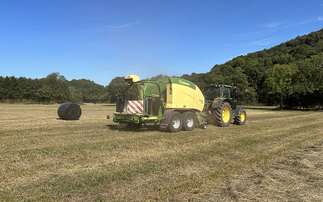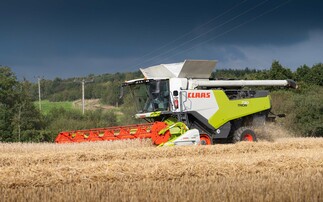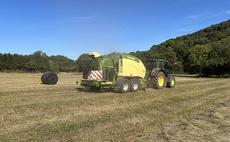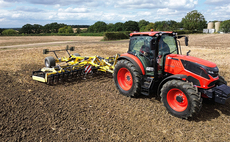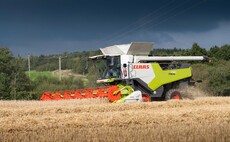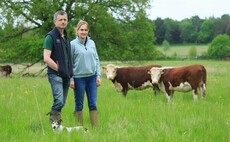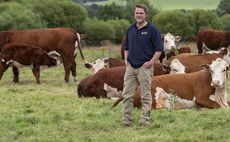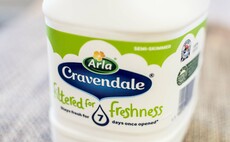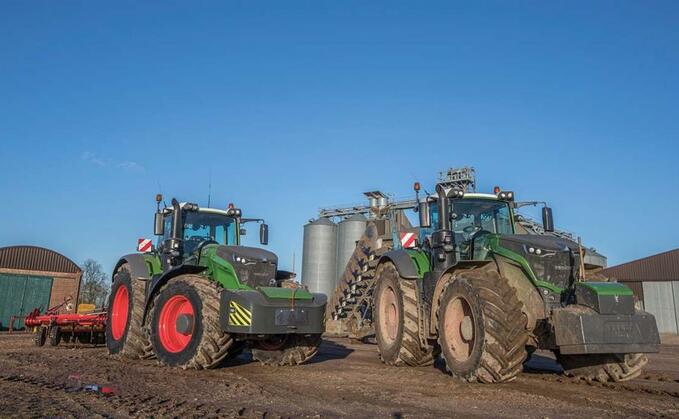
In search of a flexible and versatile frontline power solution, one Norfolk grower has ditched rubber tracks in favour of tyres, opting for two 500hp Fendt 1050s.
Geoff Ashcroft reports...
In the right conditions, at the right time, there is little to touch the performance and productivity of a rubber-tracked tractor when compared to its rubber-tyred equivalent.
But, as with spraying conditions, those ‘right conditions' are becoming harder and harder to find.
It is one of the reasons why a Norfolk farming business has turned its back on rubber tracks and gone back to tyres with primary cultivations and drilling.
Michael Balls, arable manager at Albanwise Farming's Hill Farm, Barton Bendish, says: "I look at time and where we might be able to optimise it, and this means looking closely at logistics and efficiency.
"Tracks have served their purpose, but our analysis has proven you'll almost always need an extra tractor to take up the slack for those jobs where you just wouldn't, or couldn't, use a track layer. And this adds cost."
The Barton Bendish team is a lean one, with four full-time operators employed to handle a workload of more than 2,430 hectares.
Cropping extends to oilseed rape, winter wheat, winter barley, spring barley, spring beans, rye, sugar beet, maize and vining peas, on soil types which range from sand over chalk to heavy clay loams.
Where the farm recently operated with six tractors, the business is well on its way to running only four in its fleet.
"We had been running two Challenger tractors and four John Deeres," says Mr Balls.
"A 400hp 775E and a 350hp 765D would handle cultivations and drilling, while an 8310R, 6190R and two 6150Rs were available to meet the rest of our power requirements."
"Initially, I thought we might have stuck with a Challenger and added a larger articulated tractor on tracks, but trying the 1050 proved otherwise and threw up the old ‘tyres versus tracks' debate. I can almost buy two sets of Michelin tyres for the 1050 compared to four tracks for an articulated tractor."
Advances in tyre technology have led to Fendt's development of VarioGrip on-the-move tyre pressure adjustment for the 1050, while electronic management of engine, transmission and hydraulic systems has enabled the infinitely variable use of power needed to maintain a chosen forward speed.
It was a demonstration in late autumn 2016 by local dealer TNS which was to prove something of a turning point.
"We tried the 500hp Fendt with a 6m SLD on greasy chalk and the tractor just sat down and walked away with the cultivator," he says.
"The Challenger would have struggled due to the slippery surface. And while it wasn't the type of conditions when we would normally choose to be on the land, it proved we could extend our working windows if we needed to.
"VarioGrip is a game-changer. We had to look at things differently and open our minds to the many different options available. And part of this process is having your operators on-board with you."
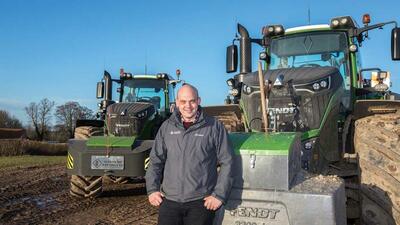
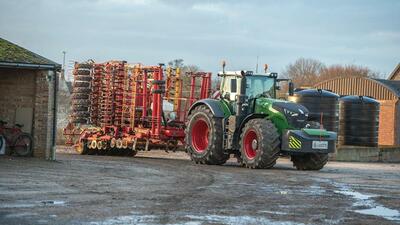
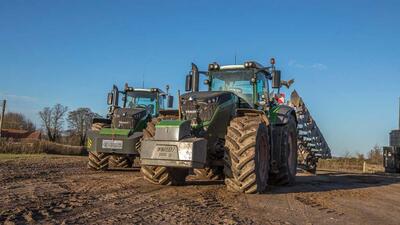
Fendt 1050 Data
Engine: 12.4-litre, six-cylinder MAN
Rated speed: 1,700rpm
Peak power: 517hp
Peak torque: 2,400Nm from 1,100-1,500rpm
Transmission: 0-60kph CVT
Unladen weight: 14 tonnes
More
When it came to the practical aspects, he says sticking with rubber tracks would have required an extra wheeled tractor in the fleet.
"And this meant we could only trim the fleet to five tractors," he says. "But opting for a pair of Fendt 1050s as frontline tractors opened up so many more possibilities and gave us access to greater versatility too. We can, and do, use the 1050s for many more roles than we would ever have used the Challengers."
Those tasks also include trailer work at peak times in harvest when the farm's Lexion 780 and a contractor's Lexion 770 are working furthest from home, and the farm needs to call in extra haulage help.
"It might seem extreme to put 500hp on a grain trailer, but a 50kph transmission and the ability to haul efficiently on a 30-mile round trip means we don't have to own or hire more tractors.
"It's something we would never have done with rubber tracks, though it's more acceptable with high-horsepower wheeled tractors for a few days each year, when we need to operate six trailers.
"The Challengers were much slower on the road too, and this had an effect on productivity," he says.
"So we now have greater flexibility and no longer need to drop off the last furrow in winter."
He now aims to trim the fleet to operate with just two Fendt 1050s and a pair of 200hp John Deeres by this summer.
"Being able to reduce tractor numbers has had a positive impact on our operating costs, despite the purchase price of the Fendt 1050s," he says.
"And the long-term plan is to run the tractors up to 8,000 hours."
When it comes to fuel consumption, he reckons there is little difference in spot-rate between the Fendt 1050 and the Challengers.
"You can't use 500hp without burning fuel. We've used the change in tractors to refine what we do and how. So having a little extra power up our sleeves does mean we can cover more work in the same time, and therefore our cost/hectare has fallen."
An additional benefit of switching to tyres has been found on headlands, which no longer need a separate pass with a tined cultivator to level up headlands ahead of drilling, where the Challengers had turned.
"We have reduced compaction and drilling headlands is now a one-pass process since fitting an 8m Rapid Lift RL800 to the drill."
IN THE FIELD WITH THE FENDT 1050
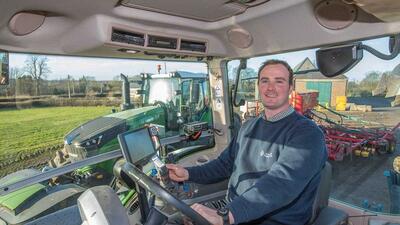
Operators Angus Stuart and Allan Codling have both been impressed with the switch from Challenger to Fendt, having put 500 and 700 hours respectively on their Fendt 1050 tractors since they arrived in July 2017.
Mr Stuart says: "Compared to a powershift transmission, a CVT is much more adaptable. It is a huge leap forward in many respects, and at this power level it has been made possible with clever management of power and traction."
He has particular praise for VarioGrip, Fendt's on-the-move tyre pressure adjustment system, which lets the farm make the most of those 900/65 R46 and 710/60 R38 Michelin Axiobib tyres.
"There are parameters built into the on-board computer system for weight and load, to help you make the most of tyre performance, traction and power," he says.
"I tend to use 1.6-1.8 bar for road transport and 0.9-1.1 bar for field work, though it depends on what I'm doing and how much ballast the tractor is carrying."
He says its takes about 15 minutes to switch between road and field pressures, all from the comfort of the cab. And to keep non-productive time to a minimum, the last pass around a field headland is an ideal opportunity to start the tyre inflation process.
"By the time I've folded up the drill and pulled out of the gate, the tyres are inflated to operate at up to 60kph. We still have a lot to learn, but we're working closely with Fendt, TNS and Michelin to find the best set-up for every task."
Hill Farm has a wide range of weights available for its tractors, including 3,300kg front weights and 1,200kg wheel weights for the two Fendts. Operating weights can be adjusted from 22 tonnes to 16t.
Mporer
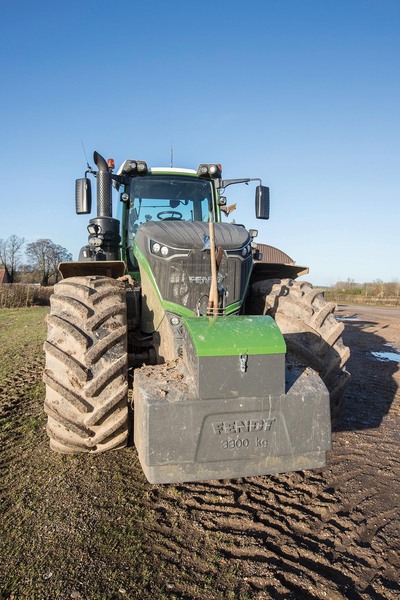
"Swapping weights is easy, and the tractor has surprised me with what it can do without any weight," he says.
"And if conditions allow, we'll try drilling without any front-end weight this season.
"It does mean we have the ability to keep working for longer and in conditions which are less than ideal," he says.
Mr Stuart says there is no comparison between the two tractors when it comes to cab comfort and space.
"The Challenger was a good machine in its day, but it has been overtaken. It was noisy, clunky and jerky, where the 1050 Vario is always smooth and is a much quieter place to spend long working days.
"It spends most of its time sat at 1,200-1,400rpm and I'd say the Fendt is probably the most comfortable tractor I've ever sat in."














